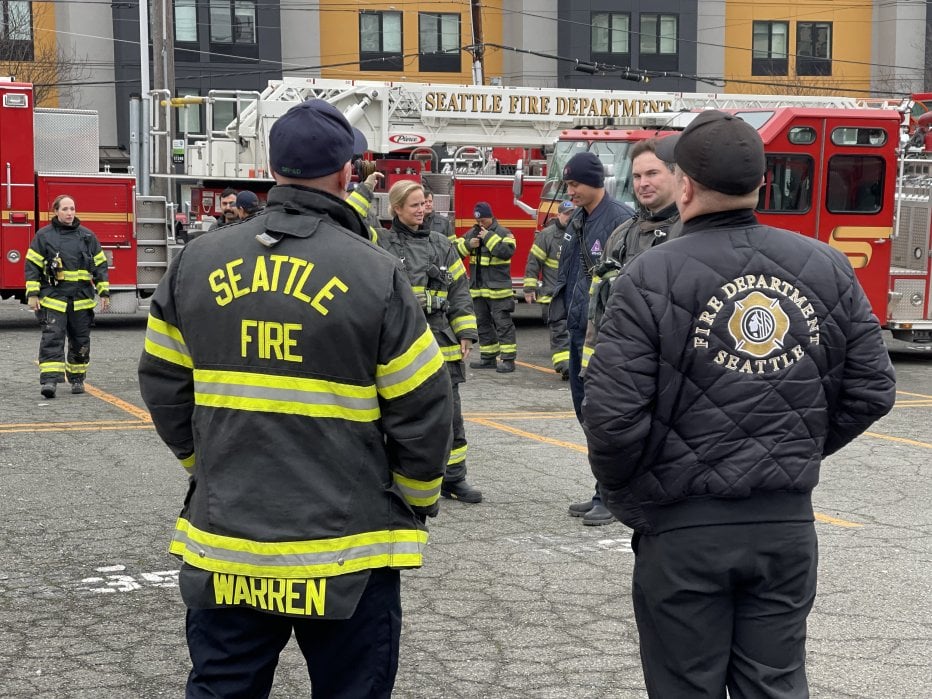Resilience & Vehicle Maintenance (From Behind the Line S1E2)

By: Lindsay Faas, M.A., RCC, Clinical Counsellor & Director of ThriveLife Counselling & Wellness
Ok, be honest – what comes to mind when you hear the word, “resilience”? I find that I get fantastically interesting responses when I say that word, particularly from First Responders and Front Line Workers, and especially since the advent of COVID. For some of you, resilience is a familiar concept and one you’ve been seeking to better understand and embody – maybe you’ve found some resources that talk about this topic and help you implement some strategies.
For others, it seems to feel like a buzzword.
It is a word that comes up often, it feels kind of fluffy and not applicable on a personal level, or it is used in passing to mean to do something to help yourself but isn’t offered with any idea of where to start. Most especially since COVID, I hear more and more frontline workers sharing about how they feel sick of hearing the word resilience – it’s like this impossible thing to achieve when the demands of the work are so high, the demands of life outside of work are also high, and there is an unrelenting awareness that we are living and working through and post-pandemic. I hear often, that resilience is this great idea “in theory” but gets sticky in practice – and usually, I find that this is because we’re working with the wrong definition.
Defining REAL Resilience
I think to most people, resilience means bouncing back. Simple right?
Except that in its simplicity, it feels somewhat useless or not applicable. It brings up ideas of thinking positively, not being affected by the hard stuff that comes up day to day, and being able to carry on in the face of adversity. Like magic, right? …But when you do a job that means constantly staring into the eyes of some of the very hardest moments for our fellow humans, how are we supposed to just keep “bouncing back”? Time and time and time again – how do you stay positive? How does this happen? How do we do resilience?
Well – let’s start out by acknowledging that resilience is not about bouncing back as if unaffected by the hard things we confront day to day. Like I said before, generally I think we’re working with the wrong definition. What resilience really is, is an ability to recover from or adjust to misfortune, stress or change in a way that accepts the truth of the suffering, acknowledges the depth of impact the suffering has, and seeks to make the suffering and its impacts a meaningful part of our self-narrative. Ok, I know that was dense, let’s break it down.
Resilience & car maintenance
Let’s start by describing it this way: Imagine buying a new car. It is in mint condition and offers a smooth ride. Now imagine driving that new car on nothing but beautiful, newly paved highways. Minimal bumps or potholes, maybe a speed bump here or there when you grab your drive-through coffee… optimal conditions for maintaining the quality of the system you have purchased.
Now, imagine buying the same new car, but instead of driving it on newly paved highways – you are driving it on old pot-hole-filled highways and gravel roads. It faces constant bumps and is put through its paces. If we contrast these two examples, in both scenarios the car is coming in with the best quality systems in place. It is able to handle the moment-to-moment bumps in the road with relative ease… but it’s pretty obvious that the car handling continuous bumps is going to likely require a different level of maintenance than the one riding on primo paving.
Resilience is not about the car we bought.
What I mean is that even if we come into frontline work under the best of conditions with high capacities for resilience in place, we are still running ourselves through a system that includes constant stress and persistent pressure. We can’t expect to make it through without putting in some maintenance. And yes, this maintenance will need to look different than it likely does for the average person who is riding the nicely paved highway. Resilience doesn’t just happen, it’s worked at.
Also, let’s be honest and know that for most of us, we likely aren’t starting out with a mint-conditioned vehicle even before putting it through its paces. Likely we have already suffered some dents and scratches and our shocks have already been put to the test prior to our careers. This is a topic we will return to another day, but it’s important to know that for many the interest in entering a helping profession like First Response and Front Line Work emerges from our own early experiences that shape having a helper’s heart. These experiences often include our own experiences of suffering, loneliness, and adversity. If this is the case, our resilience walking in the door is likely already somewhat compromised and we need to get really intentional about investing in routine maintenance.
I just said a word that is key, and I’m going to encourage you to write it down and put it somewhere you’ll see it. Set it in an alarm on your phone, post it on your dashboard – I don’t care where you put it but put it somewhere. The word is: intentional.
When we think about the toll of the job, it comes through many moments. Moments big and small. The wear is a bunch of bumps that push your system when added up over time. Resilience is not this magical way of thinking positively and just not letting things get to you – that’s not realistic and it will fail you. Resilience is about recognizing the terrain you are driving the car on, and being intentional about investing in the requisite maintenance along the way. Not waiting until the car broke down on the side of the road begging to be put out of its misery – but servicing its needs to keep it trucking along.
Breaking Resilience Down Into Do-Able Parts
Let’s revisit our definition one more time: Resilience is an ability to recover from or adjust to misfortune, stress or change in a way that accepts the truth of the suffering, acknowledges the depth of impact the suffering has, and seeks to make the suffering and its impacts a meaningful part of our self-narrative.
So let’s break this down:
First, resilience is an ability to recover from or adjust. It does not mean being unaffected by, springing back as if nothing has happened. And by the way, both the words recover from and adjust to are active words – resilience asks us to be active participants in a process, not just bystanders hoping to come out of the chaos unscathed.
Second, when we’re engaging in resilience, we are recovering from or adjusting to misfortune, stress, or change. What this means is we cannot know our resilience unless we are faced with hardship. Resilience and our capacity for it are defined by the existence of difficulty. So, when we face hardship, we need to know that the experience itself does not define our resilience, rather our choices and responses to the situation do.
Third, when we face misfortune, stress, or change, in order to engage it from a place of resilience, seeking to recover from or adjust to the hardship, we need to do three things:
- One, we need to accept the truth of the suffering. We have to look at the situation and say, “shit, this is tough!” To be resilient, we cannot bury our heads in the sand and act as if everything is fine. We can’t trick ourselves into believing that. To do so is not resilience, and it will not be sustainable. We have to see the situation for what it is and allow ourselves permission to call it by name—a bit like Harry Potter using the name Voldemort.
- Two, we need to acknowledge the depth of impact the suffering has. So once we say to ourselves and admit to ourselves that, “shit, this is tough!”, the next thing is some version of awareness of what the situation is impacting. This might be things like, “I can see I’m feeling more fatigued and irritable, I can tell the kids are tiptoeing around me,” or “I can feel myself being weighed down by this one like I can’t shake it, and all I want to do is sleep to avoid it.” These are just a couple of examples, but there are honestly a million variations, and will be personal to you, the situation, and your context.
- Third, we need to seek to make the suffering and its impacts a meaningful part of our self-narrative. What this means is that we need to engage with the difficulty and its impacts and work to tell a story about ourselves that helps to put these pieces in a meaningful place. How we go about doing this is again extraordinarily personal and will look unique to you, but generally includes specific ways of speaking to yourself about the situation, and some actions to help support your needs to make meaning of the hardship.
I hope you can spend some time thinking about the wear and tear your resilience is facing and consider the maintenance routines you either have in place or don’t. Check out a PDF infographic I created that walks you through the definition of resilience and the breakdown covered here. I hope this helps you to start implementing or strengthening your maintenance routine to keep you well, both on the job and off…because breakdowns, both vehicular and mental, are not fun, and strong routine maintenance can help us avoid these…on both counts! You can find the link to the infographic in the show notes from this episode. Find the full episode of Behind the Line, Season 1, Episode 2 on our website, YouTube, or wherever you listen to podcasts.
Photo by Stephen Baer
Podcast
Contests & Promotions
















